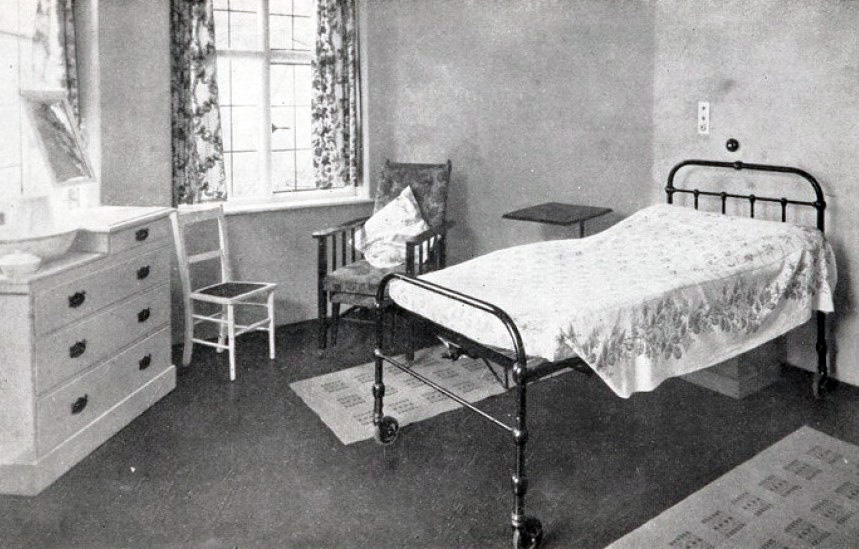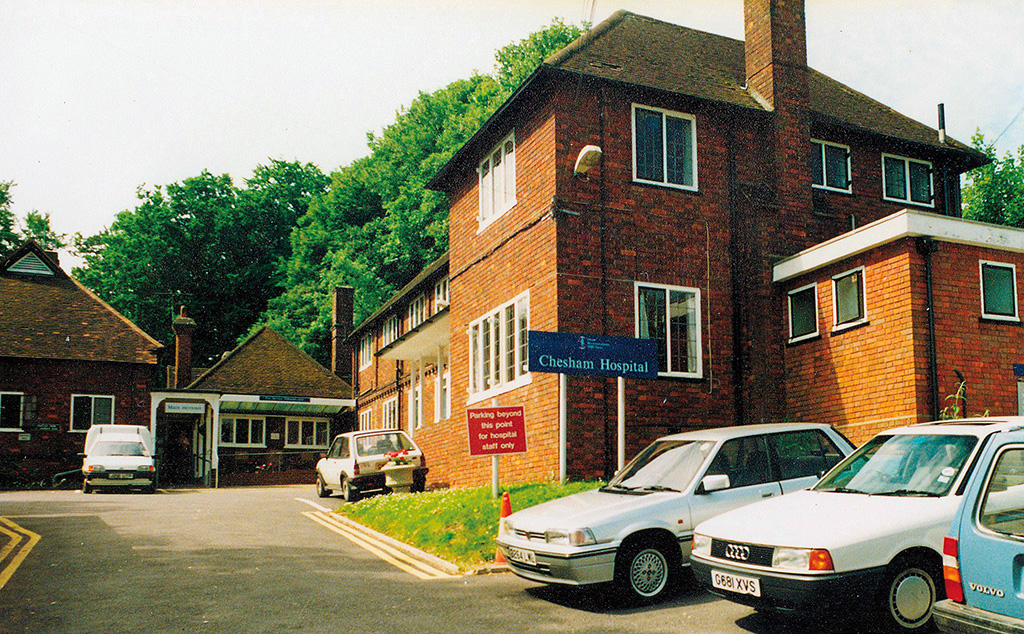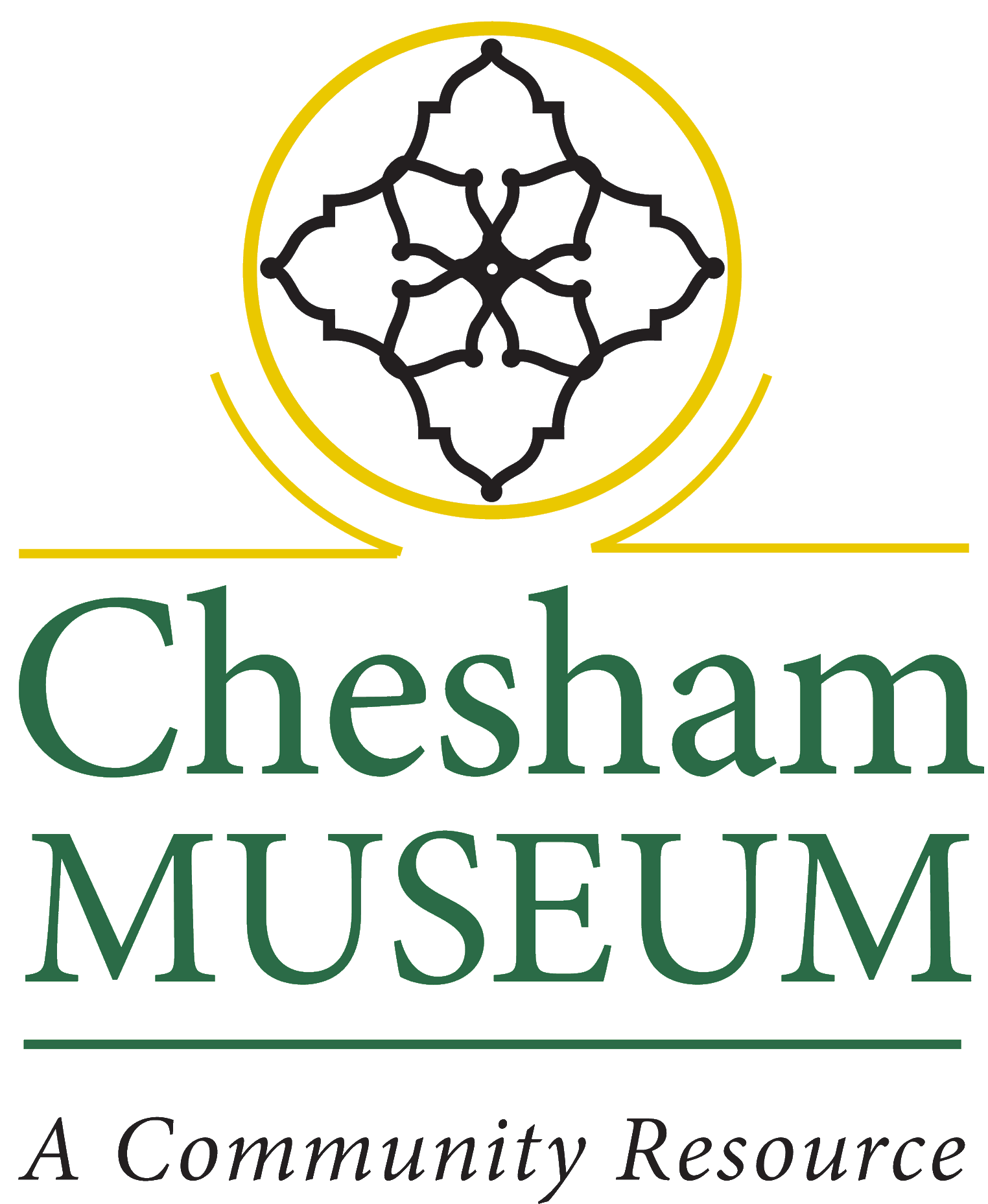The story of Chesham Hospital
For 135 years Chesham had its own hospital and its own local health service. This is the story:

Hospital founders
The idea of a hospital at Chesham was first reported in 1866. By October 1866, it was decided to build the hospital near Inkerman Terrace, in Waterside. The first planning meeting was on 31st October 1866, which included Rev Aylward the vicar, and the town doctors: Dr George Faithorn, and his new assistant Dr John Foot Churchill. Lord Chesham donated a plot of land of nearly 6 acres called Clever Piece in Waterside. The idea had widespread support across Chesham and fundraising began.
Building the hospital
The hospital was designed by Professor Lewis of John Street, Adelphi, London and the contractor was William Boughton of Chesham. Building started in June 1869. Materials were brought by horse and waggon up the steep hill, which is now called Hospital Hill.
Opening ceremony 1869
A dedication service was held at Christ Church, Waterside at 11 a.m. on 30th October 1869 led by the Bishop of Oxford. From there the people proceeded to the hospital and inspected the interior. Then the bishop prayed for the hospital and pronounced Chesham Cottage Hospital open for patients. Then for one hour, locals were invited in to look around, whilst the bishop and local dignitaries were invited to Latimer House where Lord Chesham laid on a fine lunch.
Typhoid epidemic
Chesham was hit by a typhoid epidemic at the end of 1871. Amongst those many people who died were Rev Aylward the vicar, his friend Dr Faithorn in October 1871 and two nurses Jane Field and Emma Jennings.
Staff
The original hospital had 7 beds and a cot. Chesham’s doctors offered their services free of charge. When it started the hospital was overseen by Head Nurse Arabella Hazard (who retired in 1880 and died in 1881). She was assisted by Nurse Mary Ann Beckley, (who died in 1898). They were the only paid staff. The hospital was designated for use by residents of Chesham and the surrounding villages, including Chenies and Chesham Bois.
Donations
The hospital was funded in many ways such as donations, bequests, and subscriptions from local people and companies. Charity boxes were also left at Chesham Station, and some shops and pubs. Many items called “gifts in kind” were given to the hospital to save them buying things they needed such as eggs, fruit and vegetables, cakes, jam, jelly, books and magazines, toys, blankets and even pheasants from Lord Chesham’s estate.
Church support
All the churches of Chesham were supporters of Chesham Cottage Hospital. From at least 1891 there was one Sunday every July called Hospital Sunday. On this day the churches and chapels of Chesham and villages agreed to donate their collection to the hospital. Many churches would also donate fruit and vegetables from their Harvest Festivals to the hospital. Most of the town clergy were regular visitors to their ill parishioners, and acted as chaplains. Some church Sunday Schools would go carol singing at the hospital around Christmas time.
Chesham Warm Memorial Hospital
After the Great War the idea came to have a fund to pay for lasting legacies of benefit to Chesham. From 1920 there was by a door to door collection during the week around Hospital Sunday. In January 1921, the Chesham and District War Memorial Fund was established to pay for a War Memorial in Chesham, and to pay for an extension to the hospital. The new initiatives of a carnival and a fete began in aid of the Hospital Extension Fund. From 1922 the Hospital Carnival organised by the Friendly Societies of Chesham, and from 1923 an annual Hospital Fete was held at the Bury, at the initiative of William Lowndes Esq.
The new hospital
Messrs Rust and Ratcliffe won the tender to extend the hospital and the architects were Kemp and Howe. The hospital closed on 25th May 1923 to allow work to start. At 3p.m. on 23rd August 1923 a principal foundation stone was laid by Lord Chesham and seven other stones were laid by key members of the project. The new hospital was opened by the Lord Lieutenant of Bucks, who was then Lord Cottesloe of Swanbourne, at 3p.m. on 16th March 1924 attended by 2,000 people. He unveiled a brass plaque which read : “To the glory of God and in grateful remembrance of all those who served their King and Country in the Great War, this Hospital was in Part Re-Built and Greatly Enlarged… “

The first patient was admitted on 1st April 1924. The enlarged hospital had 23 beds and a private ward. In 1927, a Night Nurses’ Home was built. The annual Hospital Carnival continued to fund the hospital until 1934, and the annual Hospital Fete continued until 1939.
Contributory Scheme 1923
In 1923, the Worker’s Hospital Committee was formed and the Contributory Scheme started. People who contributed weekly were free from charges. The original fees were a penny for teenagers, tuppence for a single person or widow, and threepence for a working family man.
Accident and emergency cases were admitted at all times, but other patients were considered according to the recommendation of the Medical Officer. No-one was refused admission if they could not pay, but patients who were not entitled to the benefits of the Contributory Scheme were required to make a weekly contribution according to their means. This was Chesham’s own health service.
Joining the NHS 1948
In 1948, the National Health Service (NHS) was established and Chesham Hospital joined. From 1974, Chesham came under the High Wycombe District Health Authority. In 1993 it came under the South Bucks NHS Trust, later the Chiltern and South Bucks Primary Care Trust.

End of the hospital 2005
Despite a vigorous public campaign to save it, the NHS Trust closed the hospital in 2005. It was a sad end to great enterprise. The site became abandoned and vandalised, sold and now demolished. Today Chesham folk use the Chess Medical Centre in Berkhampstead Road, or they use other hospitals depending on the services required.
This article is a modified form of an article published in the Bucks Free Press, Amersham and Chesham edition on 17th July 2020, during the Covid epidemic.
Other blogs you might enjoy
You can learn more about health in Chesham by reading our Chesham’s lost isolation hospital and the typhoid epidemic of 1871 blogs.










